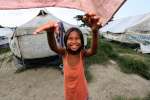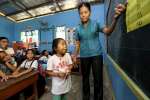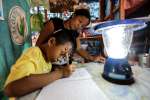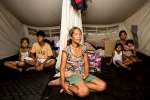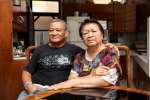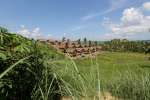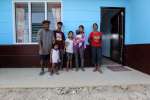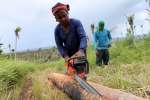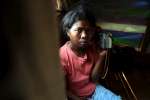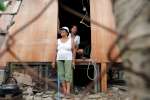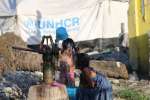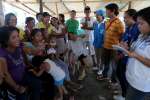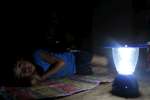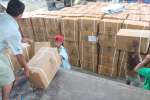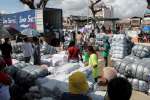- Text size
 |
|  |
|  |
| 
- Français
Over 120,000 displaced as conflict continues in southern Philippines
Briefing Notes, 20 March 2015
This is a summary of what was said by UNHCR spokesperson Babar Baloch – to whom quoted text may be attributed – at the press briefing, on 20 March 2015, at the Palais des Nations in Geneva.
In central Mindanao, more than 120,000 people have been displaced since fighting broke out between government troops and armed groups in late January. UNHCR is concerned about the safety of civilians as the conflict spreads into local villages.
UNHCR and its partners estimate that 13 municipalities in Maguindanao and North Cotabato have been affected in eight weeks of clashes between the military and police on one side, and the non-state armed group, Bangsamoro Islamic Freedom Fighters, on the other. The displaced people are currently sheltering in schools, public buildings and madrasas.
The 120,000 estimate does not include people hosted by relatives and friends, and the numbers are expected to grow as the fighting extends to the local communities that are already hosting many of the displaced.
Due to the volatile security situation, UNHCR cannot access many of the affected areas and relies on information provided by local authorities, civil society organizations and partners.
UNHCR and other UN agencies in Mindanao are working closely with the local authorities to monitor the conditions of displaced people inside and outside the shelters. We have provided some blankets, jerry cans, sleeping mats, mosquito nets and plastic sheets, but more aid is needed urgently.
UNHCR is particularly concerned about the safety of civilians, including women and children who are caught up in the conflict areas. It is unclear how long or widely the ongoing law and order operation will extend and this is hindering the safe and dignified return of the displaced people.
Women and children could potentially be exposed to exploitation and abuse, given their lack of income and community protection. The limited provision of food, medicine, water and temporary shelter could exacerbate these vulnerabilities.
UNHCR appeals to all parties of the conflict to ensure the safety of civilians while the law and order operation is underway.
For more information, please contact:
- In Mindanao: Kent Bolisay, +63 915 592 1568
- In Manila: Regina Maramag, +63 917 597 9667
- In Bangkok (regional office): Vivian Tan, +66 818 270 280
- In Geneva: Babar Baloch, +41 79 557 9106




